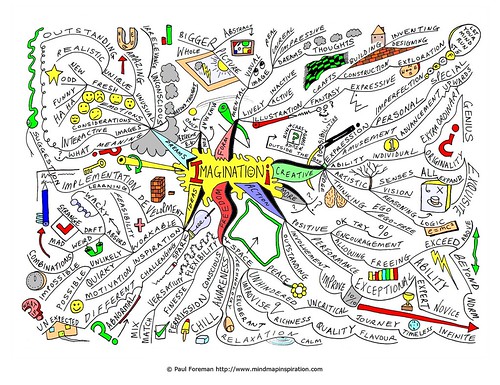Tagged: imagination
Why Today’s Inventors Need to Read More Science Fiction
“Fiction allows you to live more lives in the space-time of one lifetime than you would normally be able to.”
MIT researchers Dan Novy and Sophia Brueckner argue that the mind-bending worlds of authors such as Philip K. Dick and Arthur C. Clarke can help us not just come up with ideas for new gadgets, but anticipate their consequences.
How will police use a gun that immobilizes its target but does not kill? What would people do with a device that could provide them with any mood they desire? What are the consequences of a massive, instant global communications network?
Such questions are relevant to many technologies on the market today, but their first iterations appeared not in lab prototypes but in the pages of science fiction.

This fall, MIT Media Lab researchers Dan Novy and Sophia Brueckner are teaching “Science Fiction to Science Fabrication,” aka “Pulp to Prototype,” a course that mines these “fantastic imaginings of the future” for analysis of our very real present.
Carl Jung – the Power of Imagination
More links…
People are too clever and inspiring and creative and innovative and MAGIC IS REAL
I live in the future?
And this is how it works:
More cool innovations that cause me to believe anything is possible.
Why, sometimes I’ve believed as many as six impossible things before breakfast.
Kinect Ubi Software Touchscreen
Spell check pen
Drinking water out of air
A New Technique to Strip the Plastic Film Off Trash
This is How it Works: This is Not How it Works
| — | Alex Billington, This is How it Works: This is Not How it Works |
SYMPOSIUM TAKEOUT
Honestly I was surprised the question of why the concept of design fiction is relevant is still being asked. I actually wrote ‘this is outrageous’ in my notes… All media is, is creativity and imagination, surely.
To think about this week:
- Sense of play: not necessarily evidence-based; can make you reassess what counts as evidence
- Problems with no answers: any ‘solution’ will create a new problem, eg asylum seeker policy, climate change policy; we need to be able to think through possibilities and imagine futures.
- Design as a completely future-oriented subject: design is about changing things for the future.
- The traditional model of repeating what we did yesterday is irrelevant: however obviously grounding in current practices is important for doing an speculative thinking.
- It’s also important to look BACK: history is a creative wellspring; are we living in a remixed culture?
- Context is important for success: eg, 12 second video was three years too early, Vine now a great success; perhaps being ‘before your time’ is not necessarily a good thing.
- Everything has agency, everything is an actor, everything can assume change on the environment.
imagination
Thinking, as we may.
Dr Vannevar Bush’s ‘As We May Think‘ is another article that has amazed me on some clever individuals’ forward thinking, a true testament to WHAT IF.
It’s also made me think about more recent possibilities that has come about because someone was brave enough to imagine and see their idea come to fruition.
Aside from these girls, Elif Bilgin, S.M. Sambavi and Ann Makosinski respectively, (all 16 or younger) making me feel extremely inadequate, they are outrageously inspiring.
Never stop spinning.
More thoughts on Design Fictions feat. Bruce Sterling
Design fiction:
- an approach to design that speculates about new ideas through prototyping and storytelling
- the deliberate use of diegetic prototypes to suspend disbelief about change
Some examples of this diegetic prototyping, also described as the fictional making as a way to think about real things, can be found on the aptly named Tumblr: Diegetic Prototypes.
I particularly like the ‘Robot readable world’ video below, which has immediately sparked numerous ‘What if?’s and ‘How can we use this?’s and ‘What about if?’s, so despite some trepidation in reading about diegetic prototyping, I think I might be a convert after seeing some examples.
Robot readable world from Timo on Vimeo.



